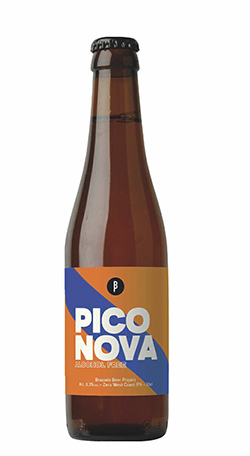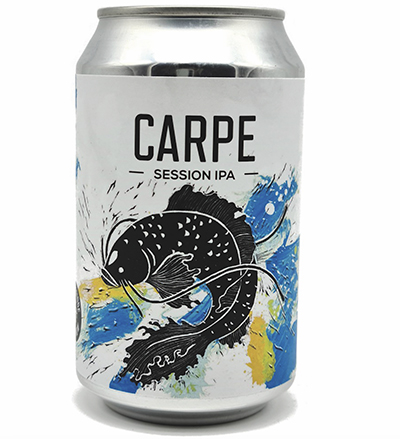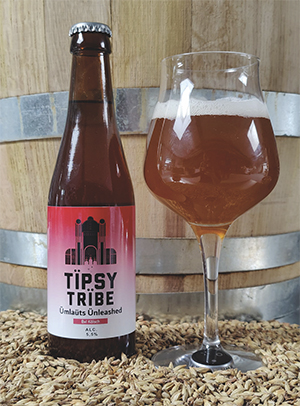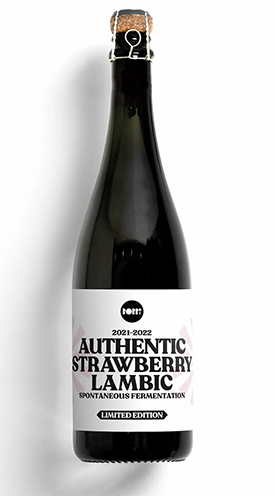As the cold snap of winter gives way to the bluebell blossoms of spring, the residents of Brussels are quietly making their way back onto the terraces of the capital’s cafés and bars. When spring makes its full arrival, you’ll be there too, cherishing your apéro à la bière sur la terrasse.
There is, of course, no official definition of summer beer (or spring beer, for that matter), but the general consensus is that they tend to be constructed with accessible, refreshing flavours, usually finishing at alcohol levels that make it easy to drink multiple glasses (ie “sessionable”). Think dry, bright and thirst-quenching.
So, what should you drink this spring? Here are some of the trends you might spot in Brussels’ bars in the coming months.
First is the continued growth of low and no alcohol beers, defined as those with less than 0.5 per cent ABV. A recent European Commission study reveals that low and no-alcohol beers have grown from claiming very little market share a decade ago to as much as 7.2 per cent of the entire European beer market in 2021 in terms of value (and eight per cent in terms of volume).
This summer you’ll also notice the use of fruit across various beer styles. The famous Brasserie Cantillon of Anderlecht continues to experiment with their fruit lambics, whether that’s the recently released Drogone Lambic, produced in collaboration with an Italian winemaker, or the 2023 vintage of Sang Bleu, a lambic blend with blue honeysuckle berries.
On the complete other end of the Brussels fruit beer spectrum, Frambo is a sour raspberry and rosemary ale from DrinkThatBeer, a brewery project which produces its beers at the CoHop cooperative brewery in Etterbeek.
Ready for a refreshing glass? Here are five Brussels beers for you to try this spring and summer.
1. Bière de Table
Table Beer, 3.8 per cent ABV (Brasserie La Jungle)
 copy.jpg) Bière de table by Brasserie La Jungle
Bière de table by Brasserie La Jungle
Historically, Belgian table beer was enjoyed by children and families as a very low-alcohol accompaniment to dinner. It tasted bready and sweet with a gently carbonated kick. At one time, it was considered safer to drink than water, which likely contributed to its popularity. Newcomers Brasserie La Jungle have transformed the traditional table beer into something with much more character. Their 3.8 per cent ABV Bière de Table, a far higher ABV than traditional table beer, is hopped with fruit-forward varieties and fermented with both saccharomyces and lactic acid bacteria. The result is a light, delicate and slightly sour blonde beer of mixed fermentation, branded with colourful illustrations which hint at its interesting microbiological profile.
2. Pico Nova
West Coast IPA, 0.3 per cent ABV (Brussels Beer Project)
 Pico Nova is a low-alcohol West Coast IPA, brewed to be drier, with more bitterness and more bite than other IPA styles. Like its sister beers Pico Bello and Pico Fruta, Pico Nova is brewed using a specific yeast which creates fruity esters but minimal alcohol. It’s produced by Brussels Beer Project in collaboration with De Proefbrouwerij, a brewing facility in Lochristi with extensive technical expertise in low-alcohol fermentations. Pico Nova showcases Pahto, Simcoe and Sabro hops to deliver floral and woody aromas and notes of sweet fruit, citrus and cream caramel. Grab it in one of the many bars in the city that sell BBP beers, or in one of their three Brussels venues: their taproom at Antoine Dansaert 188, their beer and pizza bar at Rue du Bailli 1/A, or their new Port Sud brewery experience at Quai de Biestebroeck 23.
Pico Nova is a low-alcohol West Coast IPA, brewed to be drier, with more bitterness and more bite than other IPA styles. Like its sister beers Pico Bello and Pico Fruta, Pico Nova is brewed using a specific yeast which creates fruity esters but minimal alcohol. It’s produced by Brussels Beer Project in collaboration with De Proefbrouwerij, a brewing facility in Lochristi with extensive technical expertise in low-alcohol fermentations. Pico Nova showcases Pahto, Simcoe and Sabro hops to deliver floral and woody aromas and notes of sweet fruit, citrus and cream caramel. Grab it in one of the many bars in the city that sell BBP beers, or in one of their three Brussels venues: their taproom at Antoine Dansaert 188, their beer and pizza bar at Rue du Bailli 1/A, or their new Port Sud brewery experience at Quai de Biestebroeck 23.
3. Carpe
Hazy Session IPA, 4.7 per cent ABV (La Source Beer Co)
 It’s easy to spot cans of Carpe (French for the river fish, carp). A blue and yellow splash of colour provides the backdrop to a dramatic graphic of a black fish in mid-air. Like the artwork on the can, the flavours are vibrant; it’s a juicy hazy session IPA with notes of peaches, passion fruit and mango. Hazy IPAs are hop-forward ales which present with a cloudy appearance due to heavy dry hopping and no filtration. Because hops are used mostly in the later stages of the brewing process, they tend to be less bitter than other IPAs, and the substantial quantities of hops deployed equips these beers with a pronounced fruitiness in flavour and aroma. La Source Beer Co is a brewpub producing a wide range of beer styles on a site at Tour & Taxis in Brussels. The Latin phrase carpe diem speaks to enjoying the present while it is ripe, so take a moment this summer to seize a Carpe.
It’s easy to spot cans of Carpe (French for the river fish, carp). A blue and yellow splash of colour provides the backdrop to a dramatic graphic of a black fish in mid-air. Like the artwork on the can, the flavours are vibrant; it’s a juicy hazy session IPA with notes of peaches, passion fruit and mango. Hazy IPAs are hop-forward ales which present with a cloudy appearance due to heavy dry hopping and no filtration. Because hops are used mostly in the later stages of the brewing process, they tend to be less bitter than other IPAs, and the substantial quantities of hops deployed equips these beers with a pronounced fruitiness in flavour and aroma. La Source Beer Co is a brewpub producing a wide range of beer styles on a site at Tour & Taxis in Brussels. The Latin phrase carpe diem speaks to enjoying the present while it is ripe, so take a moment this summer to seize a Carpe.
4. Ümlaüts Ünleashed
Bxl Kölsch, 5.5% ABV (Tipsy Tribe)
 Ümlaüts Ünleashed from Tipsy Tribe
Ümlaüts Ünleashed from Tipsy Tribe
Tipsy Tribe, founded in 2019, claims to be Brussels’ first and only establishment to have both a brewery and a distillery under a single roof. Their Ümlaüts Ünleashed is a Brussels version of the Cologne beer kölsch, a top-fermenting style known for its pale colour, high attenuation, hoppiness and brightness of flavour. Tipsy Tribe’s version is named playfully for the Germanic umlaut. Fewer beer styles are more perfect for summer drinking than the kölsch, and Tipsy Tribe deliver one that’s grainy, fruity, light and thirst-quenching.
5. Authentic Strawberry Lambic
Fruit Lambic, 6.6% ABV (Bobbi Brewery)
 Launching its lambic last November, Bobbi is a brewery with a self-proclaimed focus on sustainability. To produce the Authentic Strawberry Lambic, they purchase spontaneously inoculated wort from Brouwerij Den Herberg of Buizingen and mature it in oak barrels in the cellars of the iconic Halles Saint-Gérys. The beer undergoes a maceration of 450g of local fresh strawberries per litre of lambic, before being blended and packaged in their own facility in Haut-Ittre. The result is a complex beer which is tart, woody and exploding with ripe strawberry flavours.
Launching its lambic last November, Bobbi is a brewery with a self-proclaimed focus on sustainability. To produce the Authentic Strawberry Lambic, they purchase spontaneously inoculated wort from Brouwerij Den Herberg of Buizingen and mature it in oak barrels in the cellars of the iconic Halles Saint-Gérys. The beer undergoes a maceration of 450g of local fresh strawberries per litre of lambic, before being blended and packaged in their own facility in Haut-Ittre. The result is a complex beer which is tart, woody and exploding with ripe strawberry flavours.
Sign up to The Parliament's weekly newsletter
Every Friday our editorial team goes behind the headlines to offer insight and analysis on the key stories driving the EU agenda. Subscribe for free here.